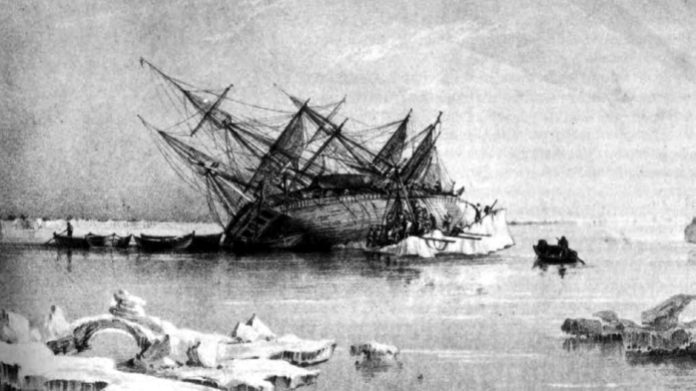In 1845, Captain John Franklin set sail from England with 132 men in two ships, the HMS Erebus and the HMS Terror. Their mission: to find the Northwest passage – the connection between the northern Atlantic and Pacific Oceans through the Arctic. It took one and a half years stuck in ice and the death of their Captain before the rest of the crew took their chances on foot, never to be seen again.
On Monday, Parks Canada confirmed that the shipwreck discovered in the aptly named Terror Bay in King William Island of Nunavut, is the long-lost HMS Terror. Along with the discovery of the wreck of HMS Erebus in 2014, this story may finally get some closure.
Go go gadget dives
Professor Alison Proctor from the University of Victoria, controlled an autonomous underwater vehicle to prowl the ocean in search of the ship. Her work in the Ocean Technology lab centres on autonomous control systems. But the real breakthrough came from Inuit knowledge, especially from members of the Gjoa Haven community located on the east side of King William Island. One hunter in particular recalled seeing a mast sticking out of the water 7 years ago.
Amazingly, the ship appears to be intact, but divers can’t go inside just yet. The first step is extensive testing for structural integrity. It’s also important that nothing is disturbed before it is photographed and mapped, so that the artifacts also come with context.
Sunken treasures
And the possibilities of what might be found are tantalizing. Last May, the first set of artifacts recovered from the HMS Erebus were unveiled, and included one of the ship’s two bronze cannons.
“The stunning artefacts from HMS Erebus are bringing this famed piece of history to life and will allow Canadians to connect with Canada’s Arctic past like never before,” said The Honourable Leona Aglukkaq, Minister of the Environment when the wreck was discovered.
The HMS Terror wreck includes the remains of Franklin’s own cabin, where logs may reveal details about what caused his death. With partitions and hatches shut, the sealed environment may have kept delicate materials such as paper, well preserved. Once retrieved, however, artefacts must undergo conservation, such as removal of salt, to prevent deterioration.
And so, 170 years after they set sail, we might get a glimpse into the lives of these men, who risked everything for discovery.








































